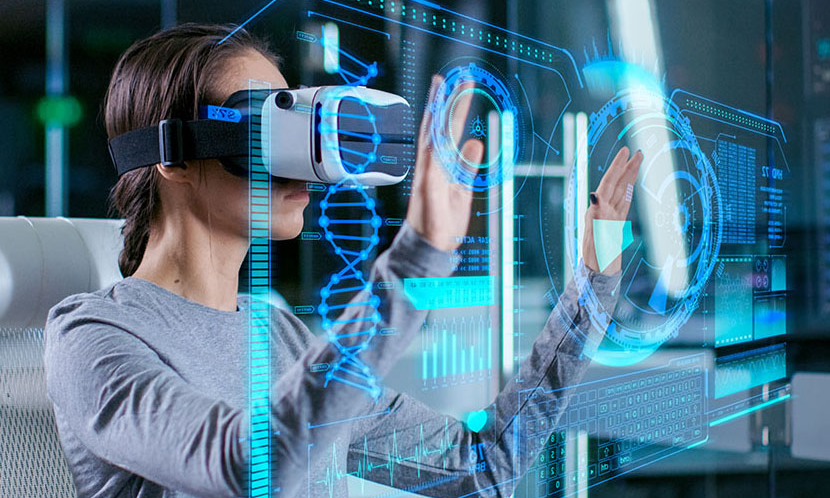In recent years, with constant advancements in technology, a world of opportunities has opened for both teachers and students. And, one such innovative innovation is the emergence of virtual lab simulations in science education. It allows students to conduct experiments and explore scientific concepts from the comfort of their own desks with the use of VR headsets.
These simulations have gained high popularity because of several compelling reasons.
And why not?
After all, with virtual lab simulations, science labs are no longer limited to the four walls of a physical classroom. Instead, they fit right in your pocket. In this blog, we will explore the benefits and possibilities of science labs in your pocket through virtual lab simulations.
Rise of Virtual Lab Simulations
The traditional educational approach involves educators and students relying on physical labs. However, these labs are limited by factors like budget constraints, availability of equipment, and safety concerns. To address these limitations of physical labs, higher education institutions have adopted virtual lab simulations that offer a lot of educational possibilities.
Some of them are explained below-
Accessibility for All
Traditional lab setup requires each student to be physically present in the lab, where students perform experiments with the physical types of equipment and get results. However, being physically present in the traditional lab is not possible for all the students, especially those who live in remote areas.
VR lab simulation is the best alternative to traditional labs that overcome this limitation. These simulations are available to anyone with a computer or mobile device and a stable internet connection, regardless of their location or financial resources.
As a result, students from various backgrounds can engage in hands-on experiments, bridging the gap in educational opportunities.
Safety first
We cannot deny that traditional labs have a lot of concerns associated with it and one among them is safety.
Students performing experiments in a chemistry lab can get exposed to toxic chemicals, and they can burn themselves while dealing with the fire of a Bunsen burner. Moreover, these chemical barriers can cause harm to their safety.
As an effective solution to this concern, VR lab simulations allow students to experiment with virtual replicas of potentially hazardous substances and equipment in a safe and controlled virtual reality environment. Using the VR simulations not only enhances safety but also fosters a culture of responsible scientific inquiry.
Cost-Efficiency
Physical labs are so expensive that it is not possible for all the schools and colleges to afford this expense. Not only it is expensive to set up a lab, but its maintenance is also expensive.
And what if equipment gets damaged?
VR learning platform for performing science experiments eliminates these financial barriers, making it possible for higher educational institutions with limited budgets to offer high-quality science education.
Flexibility and Convenience
As no two individuals have the same learning speed, how could they be able to perform exactly the same experiments as others?
Some need to repeat experiments multiple times while some can master it in one go.
However, traditional experimental labs restrict the students from performing experiments as per their needs. On the other hand, with virtual lab simulations, students can conduct VR science experiments at their own pace, anytime and anywhere. Such flexibility offered by VR technology in the classroom enables a personalized learning experience that caters to individual needs and schedules.
Benefits of Science Labs
From an enhanced understanding of complex concepts to sustainability, performing VR science experiments in a controlled environment offers a lot of benefits to educators and students.
- Enhanced Understanding: It provides a more interactive and engaging learning experience to the students where they can visualize complex scientific concepts. Not only this, they can observe the effects of their actions in real-time, and get abstract ideas more easily.
- Experiment Variability: In virtual simulations offered by VR, students have the opportunity to conduct experiments multiple times. They can explore different variables and refine their understanding of scientific principles.
- Real-World Application: VR labs replicate the physical lab setup in such a way that students can perform experiments from the comfort of their desks. It helps students to see how scientific knowledge is used in various industries, be it pharmaceuticals or environmental research.
- Interdisciplinary Learning: A lot of virtual lab platforms cover a wide range of scientific disciplines which allows students to explore and connect concepts from different areas of science, fostering interdisciplinary thinking.
- Sustainability: By reducing the need for physical materials and equipment, virtual lab simulations contribute to sustainability efforts and reduce the carbon footprint associated with traditional labs.
Conclusion
To conclude, VR lab simulations have come a long way since their inception in the world of education. In the beginning, it was all about basic computer programs that replicate simpler experimental simulations.
But with constant advancements in the scientific field, a lot of highly sophisticated VR platforms have been developed that mimic real-world lab environments which has opened doors to well-equipped labs.
Today is the right time to embrace the future of science education and bring the VR labs to your pocket.
So, are you ready?
